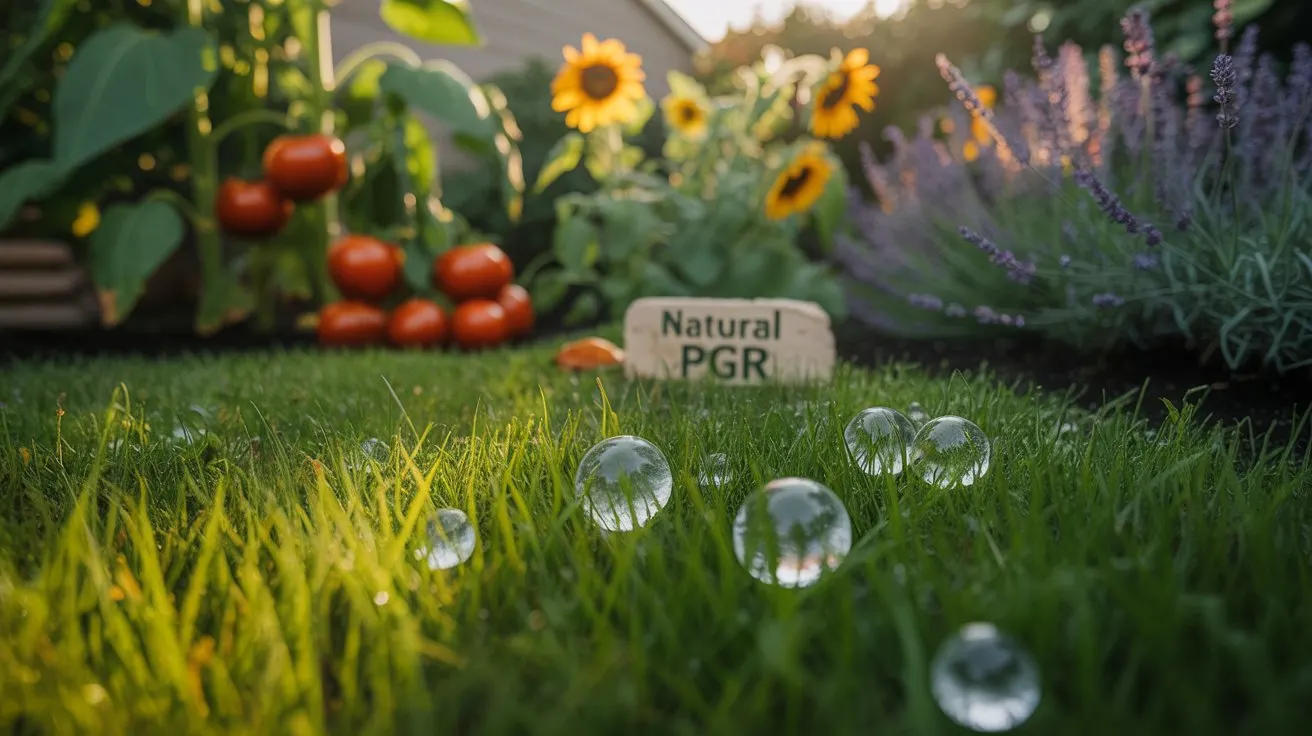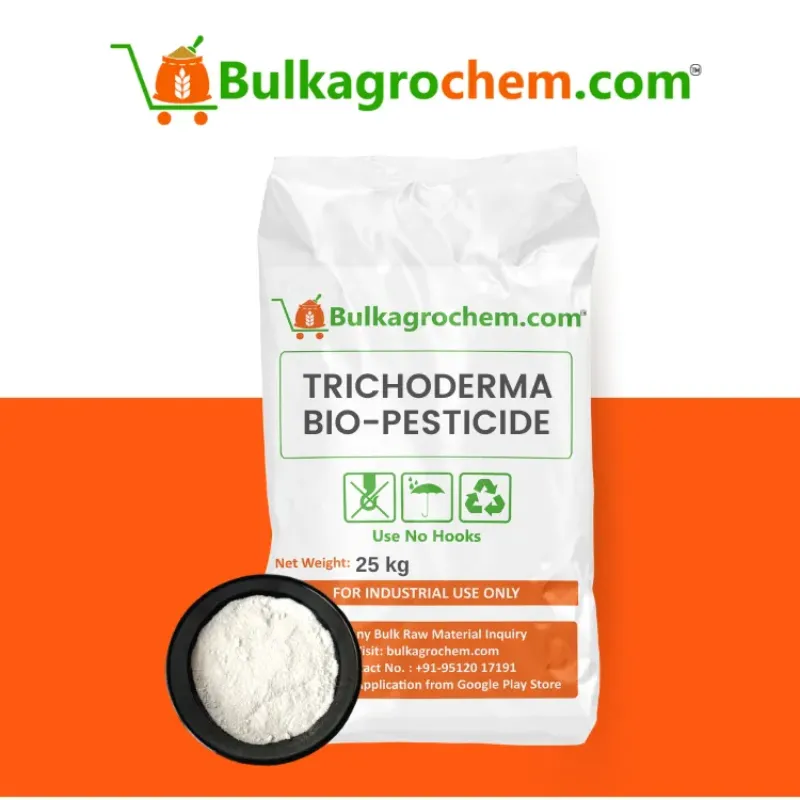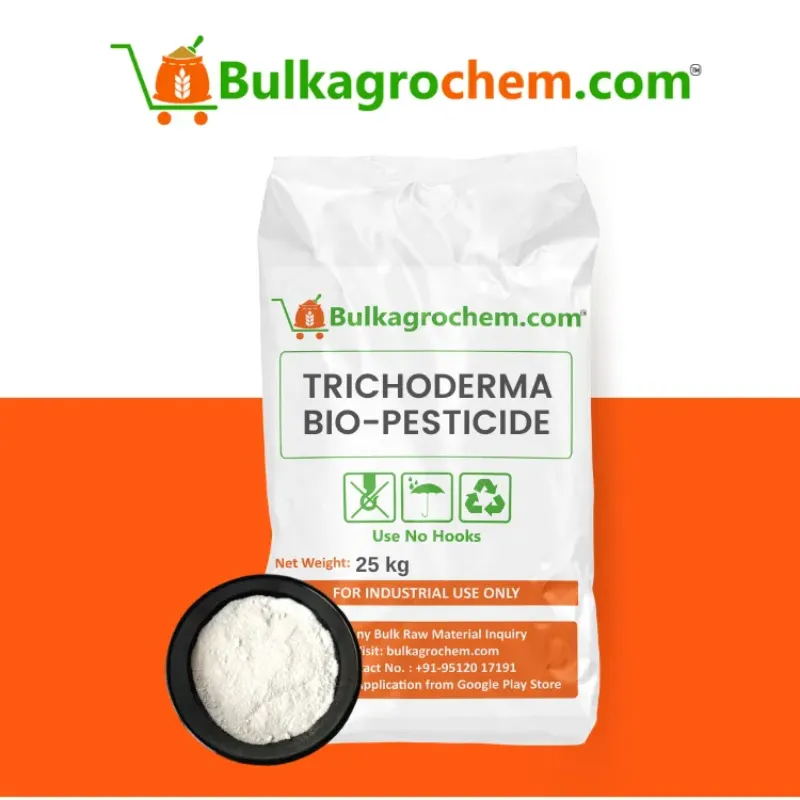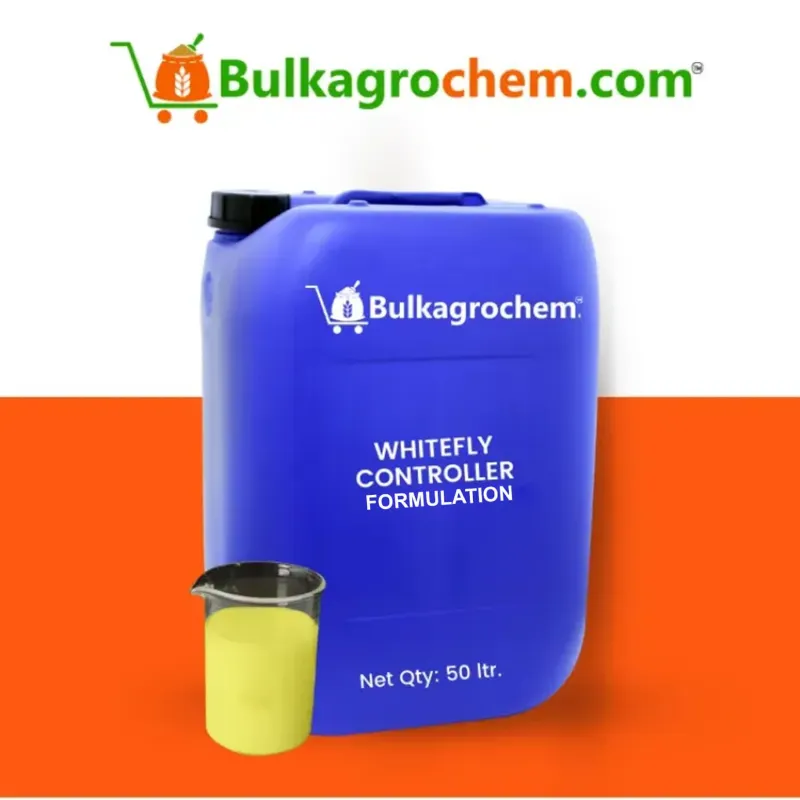Natural PGR are eco-friendly plant biostimulants that are derived from plant extracts or beneficial microbes. These plant growth regulators work with your plant's own hormone systems in micro-doses to optimize your plant's root development, accelerate leaf expansion, and improve your plant's ability to deal with stresses—without using any heavy chemicals.
- Light on the environment but highly functional: Natural PGR target stages of development like rooting, shoot growth, flowering, etc. so it does not go to waste like blanket fertilizers.
- Soil health: Most PGR contain rhiosobacteria that solubilize phosphorus and fix nitrogen, creating vigor in the productive soil web.
- Safe and effective: PGR are manufactured from seaweed, humic acids or beneficial strains, do not leave harmful residues and lower your overall input needs.
Plant Growth Regulators for Grass: Dense and Resilient Turf
Turf relies on finely tuned signals to remain dense, green and disease resistant. Apply a pgr fertilizer blend enhanced with cytokinin-rich seaweed extract is effective at:
- Encouraging tight lateral rooting for increased drought hardiness
- Increased blade density for uniform color and wear resistance
- when to apply: early spring & late summer to match root capacity peak.
PGR Fertilizer: Dual Feed-and-Signal Solutions
Utilizing N-P-K with natural PGR gives nutrients and hormonal direction at one pass:
- Mix last in tank: Add extracts or inoculants after everything is wet and you have dissolved all granular organics.
- Low-EC water: Use water that has electrical conductivity less than 1.5 mS/cm to ensure growth regulators stay active.
- Optimal rates: 2-4 L/ha foliar or 5 L/ha drench, repeat every 4 to 6 weeks throughout the growing season.
How Plant Growth Regulators (PGR) impact your growing operation
- Root development: Auxin-like compounds signal open bonds within cellulose chains, creating feeder root hairs for optimal nutrient take-up.
- Stress mitigation: Abscisic acid analogues can reduce drought stress by closing stomates and delaying leaf senescent processes under extreme heat with the help of seaweed cytokinins.
- Flower and fruit set: Micro-doses of gibberellin-mimics synchronize bloom and provide a higher count of fruit, avoiding excessive vegetative growth.
Collectively applying natural PGR and plant growth regulators to grass and ornamentals transforms every patch of green into an exceptional high-performance landscape – health, vibrant and a better place for us all.
Introduction: What Is Natural PGR and Why It Matters
Natural plant growth regulators (PGR) are environmentally-friendly biostimulants from botanical extracts (i.e. seaweeds, kelp) and beneficial microbes. They activate a plant's hormone pathways in micro-doses and without using synthetic potions that can be detrimental. Essentially, they boost vigor, stress tolerance and soil health without using harsh chemicals.
Gardeners and turf managers have sought natural pgr methodologies because they fit into sustainable practices and reduce input and environmental costs while providing for robust and evenly spreading growth.
Definition and Key Features of Natural PGR
Natural PGR are safe and sustainable biostimulants sourced from both botanical extracts (seaweed, kelp) and beneficial microbes. Unlike synthetic PGR, natural PGR work in micro-doses to stimulate a plant's own hormone pathways—increasing vitality, resilience to stress and soil health while avoiding harsh chemicals.
The plant community seems to love natural PGR for their fact, their aligned with sustainable practices, reduces all inputs and environmental footprint, and most importantly, helps to achieve strong, even growth.
Natural PGR vs. Synthetic Regulators
Natural PGR suit gardeners seeking an eco-friendly alternative; synthetics remain the go-to when immediate, high-intensity growth is required.
Role of Plant Growth Regulators for Grass and Garden Health
Plant growth regulators for grass enable tired turf to be revitalized into a dense, resilient lawn:
- Deep root growth: Auxin-rich drenches encourage branching laterally, improving drought tolerance and leading to less irrigation events.
- Blade density & color: Cytokinin sprays stimulate cell division in leaf sheaths, resulting in a greener, thicker turf stand and less bare areas.
In flower beds and vegetable plots a balanced pgr fertilizer combination of N-P-K and natural PGR can provide both ingredients and signal:
- Increased flowering and fruit set: Gibberellin-like compounds (at low doses) help synchronize blooming time and increase the number of fruits without excessive vegetative growth.
- Stress tolerance: Abscisic Acid analogues prepare stomatal responses which help tomatoes, peppers, and ornamentals resist heat and drought.
- Soil Microbial: Biological PGR that is microbial inoculant mobilizes nutrients, suppresses pathogenic organisms, and creates a living soil web.
In conclusion, a combination of natural pgr, plant growth regulators for grass and pgr fertilizer makes a complete growth logic—healthier turf, vibrantly colored gardens, and more environmentally friendly.
Plant Growth Regulators for Grass: Achieving Lush, Resilient Lawns
Applying natural plant growth regulators (PGR) as plant growth regulators will help convert average turf into a green, dense, drought resistant carpet that is tolerant to wear. A PGR fertilizer program can add both food and signals/hormones to the turf, stimulating deeper roots, thicker blades and accelerated recovery from stress.
Seaweed Extracts in PGR Fertilizer for Turf Strength
Seaweed extracts as biostimulants are a primary ingredient of plant growth regulators in PGR fertilizer blends, meant for turf:
- Rich in cytokinins and trace elements: The additional cytokinins and trace elements in the seaweed base stimulate cellular division in grass shoots, creating thicker blades of turf and an even green colour.
- Improved stress tolerance: The seaweed extracts enhance antioxidant enzyme activity, which promotes immediate recovery of the lawn after heat, drought, or heavy foot traffic.
- Synergistic micronutrients: The iron, zinc and magnesium in seaweed PGR mixtures correct living deficiencies actively limiting chlorophyll performance, chlorosis and patchy appearance.
When applying the seaweed extract, add 2 L/ha to your regular fertilization spray. Apply at daytime temperatures greater than 20 °C, for the optimum uptake and effectiveness.
Auxin-Cytokinin Blends as Natural PGR for Root Development
A balanced auxin-cytokinin formulation is very capable natural PGR combination is one of the best for establishing vigorous turf:
- Auxin function: Indole-3-butyric acid (IBA) consideration of plant function is that stimulates the lateral branching of roots, producing a dense network of fine roots that mine soil moisture.
- Cytokinin function: Benzyladenine (BAP) function is to slow leaf senescence and promote the growth of shoots to ensure new grass blades are rapidly expanding through cell division.
- Root-shoot development: the auxin-to-cytokinin ratio will determine below-ground resource allocation and above-ground resource allocation. Ideally, the ajoult fusion would be to detour 20 ppm IBA with 5 ppm BAP for balanced grass development.
Application suggestion: Drench newly seeded or sodded areas with auxin-cytokinin formulation at planting, followed by a second application 4 weeks later to improve root and shoot effort.
Timing Applications for Spring and Fall Lawn Care
The efficacy of plant growth regulators for grass depends on accurate timing, and the spring and fall periods are considered the best opportunities:
Early Spring (green-up):
- Honour early spring (green-up) with a fertilizer that has a PGR along with a seaweed extract and low doses of cytokinins once soil temps have surpassed 10 °C.
- This encourages early root activity, reduces moss or weeds from invading.
Late Spring (tiller expansion):
- In late spring (tiller expansion), use an auxin-cytokinin drench which locks in lateral rooting before the summer heat and simultaneously improves drought resistance.
Early Fall (recovery & storage):
- For early Fall, deliver a final spray in September based on a seaweed-PGR mix, which strengthens cell walls and creates antioxidant for the stress of winter.
Late Fall (hardening off):
- In late fall provide a small dose of abscisic-acid–like PGR that mutes the stomata and hardens blade tissue from freezing.
- The result is a lawn that is not only lush and green, but also able to survive, heat, traffic, and cold, by matching the appropriate growth regulators with each transition.
Integrating PGR Fertilizer for Gardens: Dual Feed-and-Signal Solutions
Mixing pgr fertilizer with natural feedstocks provides nutrients and natural PGR signals at the same time - bolstering your plants' growth and simplifying your application process.
Blending Natural PGR with Organic Nutrients
Create a one-pass mix that both feeds and directs plant growth:
- Choose your feedstock: Compost tea or fish emulsion provide N-P-K and micronutrients.
- Add natural PGR: Dissolve seaweed extract (cytokinins) or a microbial inoculant (reating auxin-producing rhizobacteria) according to label recommendations.
- Adjust for target pH: Aim for a pH of 5.5-6.5 to ensure activity for both nutrient chelates and plant growth regulators.
- Only gentle agitation: Over agitation can shear microbial cells or destroy delicate hormonal compounds.
This pgr fertilizer will supply roots and shoots with balanced nutrition and the correct hormonal cues.
Tank-Mix Best Practices for Plant Growth Regulators
Following these guidelines preserves PGR potency and prevents equipment clogging or plant injury.
Benefits of Combined Fertilizer-PGR Applications
Merging feeds and signals provides measurable benefits:
- Improved nutrient use: Auxin-driven roots are able to explore more soil and release more phosphorus and micronutrients.
- Increased growth: Cytokinins in natural PGR blends extend leaf life, which in turn increases days of photosynthesis.
- Uniformity: Gibberellin-like signals coordinated flower and fruit set reducing patchiness across beds.
- Reduced inputs: Strong roots and effective leaves can support a 10 – 15% reduction in repeat fertilizer passes.
When you integrate your pgr fertilizer program this way, every spray becomes a precision tool—feeding plants and guiding growth simultaneously for healthier, more productive gardens and lawns.
Selecting the Best Growth Promoter for Plants
Selecting the appropriate natural PGR means that every drop of your pgr fertilizer is working as a precision instrument, guiding roots, shoots and fruits to peak performance. Below, we provide the essential specifications and some ideal product recommendations, along with a specialty program for chile’s renowned fruit set and pungency.
Criteria for the Best Growth Promoter in Natural PGR Programs
Evaluate potential products against these benchmarks to find the best growth promoter for your garden or turf:
Best Growth Promoter for Plants: Top Natural PGR Products
Below are leading plant growth regulators in organic and turf circles—each earning praise as a top natural PGR solution:
Each of these has demonstrated consistent gains in root density, canopy greenness and yield—earning them “best plant growth promoter” status among eco-minded growers.
Chilli Plant Growth Promoter Programs for Fruit Set & Pungency
Chilli requires precise timing of hormones for optimum pod set and capsaicin. A specialty chilli plant growth promoter program could look as follows:
Pre-Flower Auxin Boost
- Product: RootMax Inoculate soil application
- Rate: 2 L/ha at 50 ppm IBA equivalent
- Benefit: Reduces blossom drop by 20 %, increasing pods per plant.
First-Bloom Cytokinin Spray
- Product: SeaGreen Bio-Boost foliar
- Rate: 3 L/ha with enough to provide 5 ppm BAP
- Benefit: Thickens pericarp wall to produce improved fruit size and colour.
Post-Set Gibberellin Pulse
- Product: GreenVital Blend drench
- Rate: 1 L/ha (GA precursors)
- Benefit: Increases pod length and impacts capsaicin synthesis to produce maximum pungency.
Maintenance Drench
- Product: TurfThrive Pro soil application
- Rate: 0.5 L/ha every 4 weeks
- Benefit: Maintains healthy roots and recovery from stress during heat waves
This four-step program demonstrates how plant growth regulators are transformed into a tailored PGR fertilizer strategy for high performance and production of chilli in terms of yield and quality.
How Plant Growth Regulators Enhance Garden Health
For those who observe surfacemore, plant growth regulators are a phenomenal way to convert disjointed beds into engaging landscapes, whether you administered pgr fertilizer packages or pheno-targeted natural PGR sprays, PGR can optimize development continuously speeds up at every level, root or shoot or blossom or soil vivant.
Mechanisms of Root Development & Stress Tolerance
Healthy plants and resilient lawns begin with strong roots. Plant growth regulators formulated for both grass and ornamentals use plant signals that mimic auxin and abscisic acid to:
- Stimulate lateral root branching: Auxin analogues in natural PGR formulations, by opening cell walls, create dense, interwoven networks of feeder roots wanders deep to mine water and nutrients.
- Prime defenses against drought: Abscisic-acid analogues, working preferably in dry conditions, close stomata before wilting and conserve moisture.
- Improve tolerance to salt: Some regimens of PGRs stimulate production of osmolyte - allowing plants to maintain turgor and manage less than ideal soils.
Applying these PGRs as a soil drench, or as part of a pgr fertilization program in early spring and fall, you guarantee a root system that archives the deepest anchoring and profound heat, drought, or heavy foot traffic.
Enhancing Flowering, Fruit Set & Vegetable Yields Naturally
From annual plants to edible plants, timing bloom and fruiting can maximize garden performance with little to no extra leaf growth:
- Flower induction. Seaweed extracts are rich in cytokinin and can stimulate floral meristems, resulting in earlier and greater numbers of flowers.
- Reduction in fruit drop. A low dose auxin spray after the first bloom will lock in petals, and improve fruit set by 20-30 %.
- Even sized vegetables. Gibberellins (like signals) apply post-set and synchronise the rate of seed development in pea and bean pods, and fruit development in cucurbits for a uniform harvest.
These plant growth retardants turned plant growth regulants can be incorporated into your watering program, especially where paired with organic nutrients, to maximise every bed as a means of producing high yielding spectacles.
Boosting Soil Microbial Activity & Biodiversity
Healthy soil life amplifies PGR benefits by cycling nutrients and suppressing pathogens:
Microbial inoculants in natural PGR mixes introduce thousands of colony-forming units of phosphate-solubilizers and nitrogen-fixers.
- Humic and fulvic acids feed native microbes, creating a dynamic rhizosphere that supports root health and nutrient uptake.
By choosing plant growth regulators for grass and garden beds that include microbial biostimulants, you cultivate a living soil network—multiplying the return on every pgr fertilizer application.
Application Tips for Natural PGR and PGR Fertilizer
Applying natural PGR and pgr fertilizer correctly maximizes performance, reduces waste, and protects turf and ornamentals from injury. Use these targeted tips to get the most from your plant growth regulators for grass and garden beds.
Optimal Spray Timing & Coverage Guidelines
Success starts with hitting the right window and ensuring thorough coverage:
- Growth-stage targeting:
- Early spring green-up: Apply a natural PGR foliar when daytime highs reach 10–12 °C and soil temps exceed 8 °C. Roots wake up and shoots respond best during this transition.
- Pre-flower boost: For ornamentals and edibles, spray just before first bud swell to lock in synchronized bloom and fruit set.
- Stress anticipation: Schedule abscisic-acid–mimicking PGRs 24 h before predicted heat or drought to pre-emptively close stomata.
- Coverage benchmarks:
- Turf: 200–300 L/ha water volume ensures each blade receives sufficient plant growth regulators for grass. Aim for medium droplets (250 µm) to minimize drift.
- Garden beds: 400–600 L/ha gives deeper canopy penetration; target underside of leaves for maximum uptake.
- Environmental conditions:
- Spray when wind is below 8 km/h to avoid drift.
- Choose early morning or late afternoon to reduce UV degradation of delicate PGR compounds.
Dosage Calibration, PPE & Re-Entry Intervals
Precision dosing and safety gear are non-negotiable when handling potent plant growth regulators:
Mixing order: Add organic fertilizer first, then natural PGR, stirring gently to avoid foaming or microbial cell damage.
- Tank maintenance: Rinse and flush sprayer lines after use to prevent clogs and cross-contamination with other products.
Measuring Efficacy & Adjusting Doses
Tracking results turns one-off applications into a finely tuned program:
- Establish controls: Leave a small untreated plot to compare turf density, color and recovery rates against your pgr fertilizer treated areas.
- Weekly observations: Note root depth (via small digs), blade greenness (using a chlorophyll meter) and overall vigor—recording data in a simple spreadsheet.
- Adjustments:
- Under-response: If root branching or greening is slow after 2 weeks, increase dose by 10 % or add a secondary foliar at half rate.
- Over-response: Signs of stretch or leaf burn indicate overdosing—reduce next application by 20 % and extend the interval between sprays.
By combining precise timing, dosage controls, and ongoing efficacy monitoring, your use of natural PGR and plant growth regulators for grass becomes a science-backed strategy—ensuring lush, resilient lawns and thriving gardens all season long.
Frequently Asked Questions (FAQs)
Q1 What defines a natural PGR versus synthetic?
Natural PGR are derived from botanical extracts or living microbes, mimicking hormone signals without lab-made chemicals; synthetic regulators are chemically synthesized analogues of auxins, gibberellins or cytokinins.
Q2 Are natural PGRs safe for edible crops, pets & children?
Yes—organic-certified biostimulants in a pgr fertilizer blend leave no harmful residues on vegetables or turf, posing minimal risk to people and pets when applied per label instructions.
Q3 How often should I apply natural PGR for grass vs. gardens?
Lawns benefit from two applications—one in early spring and one in late summer—while garden beds typically need 2–3 sprays per growing season, timed to green-up, bloom and fruit-set stages.
Q4 Can I mix PGR fertilizer with other organic fertilizers?
Absolutely—add your plant growth regulators last into a low-EC tank mix of compost tea or fish emulsion to combine feeding and signaling without deactivating microbes or hormones.
Q5 What timeline for visible results after application?
Expect root density and blade greenness improvements in 7–10 days; flower synchronization and yield gains become clear at bloom or harvest, depending on the crop.
Q6 Will natural PGRs affect pollinators or beneficial insects?
No—because they target internal plant hormone pathways, natural PGRs in fine, low-drift sprays are non-toxic to bees, ladybugs and other beneficial organisms.
Q7 How should I store natural PGR & pgr fertilizer products?
Keep sealed in a cool, dry place away from direct sunlight; most biostimulant concentrates and plant growth regulators for grass maintain potency for 12–24 months when stored properly.
Conclusion: Transform Your Garden with the Best Natural PGR for Plants
Harnessing natural PGR and plant growth regulators for grass and ornamentals turns every application into a precision growth tool. By integrating a pgr fertilizer program that feeds and signals simultaneously, you can achieve healthier turf, more abundant blooms and greater resilience with fewer inputs.
Recap of Benefits for Lawns & Gardens
- Deeper, stronger roots: Auxin-like signals in natural PGR products drive lateral root branching, improving drought tolerance and nutrient uptake.
- Thicker, greener canopies: Cytokinins in seaweed extracts extend leaf lifespan and boost photosynthesis, creating uniformly lush grass and vibrant flower beds.
- Stress resilience: Abscisic-acid analogues and microbial biostimulants prime plants for heat, cold and pest pressure, reducing crop loss and maintenance needs.
- Enhanced yields & quality: Gibberellin-mimicking compounds synchronize flowering and fruit set, increasing vegetable yields and ornamental bloom displays without over-fertilizing.
These advantages demonstrate why well-chosen plant growth regulators are as critical as traditional fertilization in modern, sustainable gardening.
Next Steps: Trial Plots, Record-Keeping & Learning
- Set up trial plots: Apply your chosen natural PGR and pgr fertilizer blend to a test area, leaving an adjacent control plot untreated.
- Log every detail: Record product names, application rates, growth stages, weather and observed responses in a simple spreadsheet or gardening journal.
- Measure key metrics: Track root depth (via small digs), blade density (visual scoring) and bloom count (tally flowers or fruit) weekly.
- Adjust and refine: Increase or decrease doses by 10–20 % based on performance, or swap products to find your ideal plant growth regulators for grass and garden mix.
Continuous learning through hands-on trials ensures you’ll identify the best natural PGR for plants in your specific soil and climate.
Embrace Sustainable Growth with Eco-Friendly Plant Growth Regulators
Switching to natural PGR reduces reliance on heavy synthetic chemicals and lowers your garden’s carbon footprint. Look for certified organic seaweed, humic or microbial inoculant blends that:
- Biodegrade completely, leaving no residues in soil or runoff.
- Boost soil biodiversity, fostering beneficial fungi and bacteria for long-term fertility.
- Enable reduced N-P-K use, since stronger roots and leaves optimize nutrition uptake.
By making eco-friendly plant growth regulators a staple of your care routine, you champion sustainable gardening practices—ensuring greener, healthier landscapes today and for generations to come.




